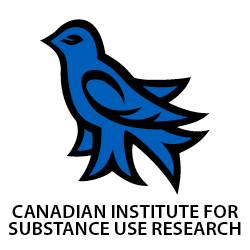Drug overdoses get a lot of media attention when a celebrity passes away, be it Cory Monteith, Michael Jackson or Anna-Nicole Smith. However, there is little discussion about how to ensure that people who use drugs live to see another day so that they can seek treatment if and when they choose to. Through the five numbers below, we share with you a harm reduction approach that educates people on how to prevent, recognize and respond to opioid overdoses.
308.
That’s the number of people who died in British Columbia in 2013 because of illicit drug overdoses. Opioids, such as heroin, morphine and codeine, suppress breathing which can result in severe brain damage, and even death, due to lack of oxygen. We can reduce the number of accidental overdoses by educating the public on the factors that increase the risk of overdose, such as mixing drugs and alcohol.
85.
That’s the percent of illicit drug overdoses that happen in the company of other people. Helping others learn to recognize the signs of overdose, and teaching them what to do in the case of an overdose, will increase the likelihood of being able to prevent death from overdoses.
1.
That’s the number of minutes it takes for naloxone to start reversing the effects of an opioid overdose. Naloxone is a safe, prescription-only medication that has been used for decades by paramedics and in emergency departments to reverse the effects of an opioid overdose. Naloxone can restore normal breathing within 1-5 minutes of administration, but the effects may wear off in 30-90 minutes and the overdose may return. Naloxone cannot be abused, does not cause a high, and has no effect on the body if opioids are not present. We can prevent accidental overdose deaths by equipping people with naloxone and training them on how to respond to an overdose.
911.
That’s the number to call as soon as possible. Calling 9-1-1 is the first and most crucial step in overdose response. Medical attention is important even after naloxone is used. The effects of naloxone wear off and overdose may return, especially since some opioids (such as methadone and fentanyl) can last in the body for a long time. Naloxone only works for opioid overdoses and has no effects on other drugs or alcohol that a person may have taken; although removing the effects of the opioids helps in a multi-drug overdose. Medical professionals are trained to handle such situations.
55.
That’s the number of lives that have been saved by take-home-naloxone kits in BC since August 2012. The kits are distributed as part of the BC Take Home Naloxone (BCTHN) program, an initiative of the Harm Reduction program at the BC Centre for Disease Control that aims to prevent unintentional deaths due to opioid use. At participating sites, clients learn how to prevent, recognize and respond to an overdose, and eligible participants are prescribed a take-home-naloxone kit. After 17 months, BCTHN operates in 35 sites across BC, from large urban hubs such as Vancouver and Surrey, to smaller rural centres such as Cranbrook, Campbell River and Fort St. John. Nearly a thousand people have been trained including staff and volunteers at health and social service agencies, as well as friends and family members of someone who uses drugs. Over 600 kits have been dispensed to clients who use opioids and various resource materials are being developed to assist community partners increase the reach of the program.
For more info, visit towardtheheart.com/naloxone
*Please note that the material presented here does not necessarily imply endorsement or agreement by individuals at the Centre for Addictions Research of BC
Authors: Ashraf Amlani (left), Harm Reduction Epidemiologist, BC Centre for Disease Control, and Jane Buxton (right), Harm Reduction Lead, BC Centre for Disease Control


